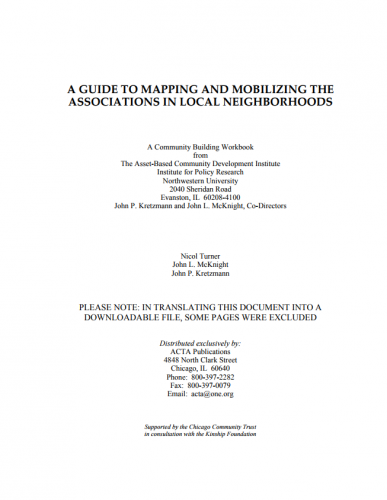This workbook outlines the steps for collecting, organizing and using information about a neighborhood’s citizen associations. It also shows how to identify the community-building activities in which the associations are currently involved, and determine the kinds of efforts in which they might want to become involved in the future.
Download A Guide to Mapping and Mobilizing the Associations in Local Neighborhoods
Before outlining the basic elements of the association mapping process, it is important to understand its relationship to asset-based community development. Traditional approaches to community development usually involve top-down or outside-in approaches. Oftentimes, consequences of these approaches are the support of “needs-based” solutions that develop policies and programs that focus on the perceived deficiencies of residents and their families and often promote dependency.
An alternative to top-down or outside-in approaches involves pinpointing available local individual and associational assets, connecting them with one another in ways that multiply their power and effectiveness, and engaging local institutions that are not yet available for local development purposes. Called asset-based community development, this approach assumes that social and economic revitalization start with what is already present in the community: the capacities of residents and the neighborhood’s associations and institutions. In this guide, associations are defined as smaller, face-to-face groups where members do the work and are not paid. Institutions, on the other hand, are organizations where paid staff do the work





